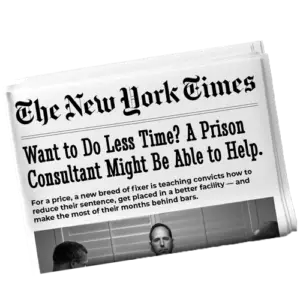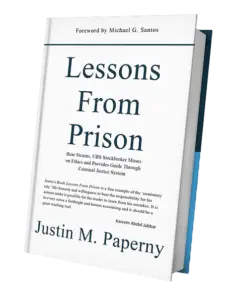His answer was never absolute. It came through fragments, habits, observation. He asked: How do we stay present? How do we face discomfort without pretending? How do we examine who we are, instead of trying to reinvent who we wish we were?
Those questions have influenced every blog in this series. They’re the same questions that matter most in federal prison.
Most people believe prison is the consequence. But for Montaigne—and for anyone willing to use their sentence honestly—prison is also the clearest structure they’ll ever have. It gives you time, space, and pattern. The question isn’t what prison takes away. It’s what you decide to do while you’re there.
Montaigne Didn’t Wait for Insight—He Built His Days Around It
In How to Live, Bakewell writes that Montaigne didn’t try to resolve contradictions. He wrote to stay awake to them. He tracked the inconsistencies in his habits. He didn’t write to declare who he was. He wrote to find out.
In prison, you are surrounded by routines. Count. Chow. Movement. Nothing changes unless you bring attention to it. Most people coast. They think insight will come later. That’s a mistake.
Montaigne wrote to explore the gap between his public self and his private habits. That’s what federal prison lets you do—if you use it.
A Journal Is More Useful Than Any Class or Program
I’ve seen dozens of people sign up for courses and programs in federal prison. Very few of them keep a daily record of what they notice, avoid, and repeat. That’s the difference between participation and proof.
One man I worked with said he was designing a mentorship program. But when his file was reviewed, he had nothing to show. No outline. No observations. No documentation. His halfway house release date was delayed.
What you say matters less than what you can show. And if you can show that you’ve been thinking every day—about your routines, your mistakes, your behavior—people take notice.
Glen Hudson built a nonprofit during his time inside. But what stood out most wasn’t the launch. It was the notes, updates, and consistent work behind it. He showed what he was building. That effort earned him a shorter sentence.
Bakewell Emphasizes That Montaigne Didn’t Pretend to Improve—He Documented the Struggle
Judges and probation officers don’t respond to happy talk or promises. They respond to patterns. If you’ve written for months about what you’re reading, what you’re resisting, and what you’re building, that carries weight. You’re not saying who you are. You’re showing who you’ve been becoming.
Too many people spend their sentence waiting to get through it. They miss the only time in their life when the schedule is built for reflection. Once they leave, everything speeds up. If you haven’t built habits inside, you won’t build them outside.
Repetition Is the Proof. Not Aspiration.
Bakewell writes that Montaigne didn’t chase transformation. He paid attention to what happened over time. He asked: What keeps showing up? What won’t go away? What do I still resist?
Your work in prison isn’t to answer those questions with clarity. It’s to write them down and follow them.
What are you noticing about your mornings? How do you behave after you get bad news? Where do you retreat when you feel uncomfortable?
If you’re not writing that down, you’re not preparing.
The Sentence Gives You a Frame. Use It While You Have It.
You don’t need a perfect plan. You need a consistent one. You need evidence that you’ve spent time thinking carefully—not about what you’ll say at release, but about what you’ve actually done.
Most people wait. Some will build. The ones who build are the ones who get taken seriously.
If someone asked for your last 90 days of thinking, would you have anything to share?
If you don’t know where to start—or want help shaping what you already have—schedule a call.
Justin Paperny



